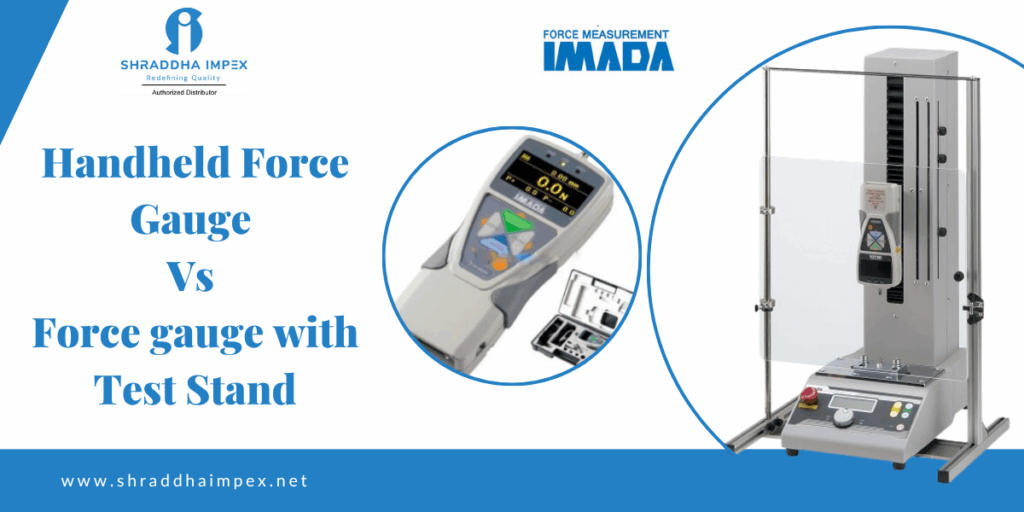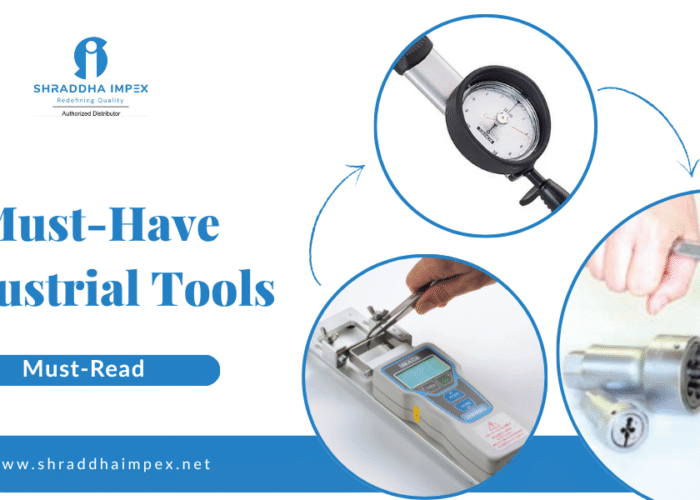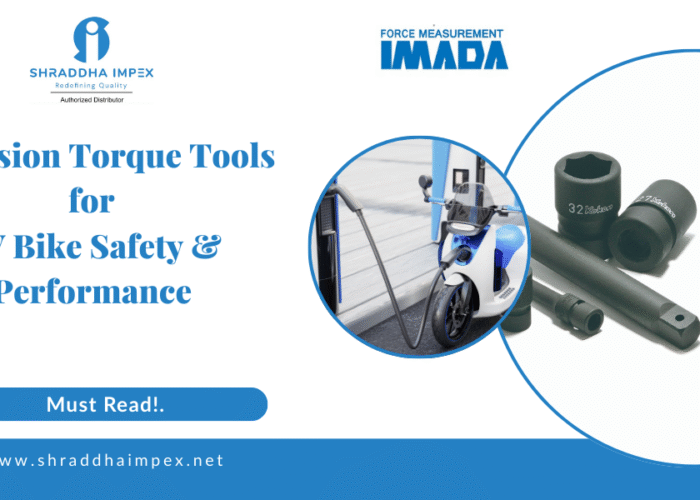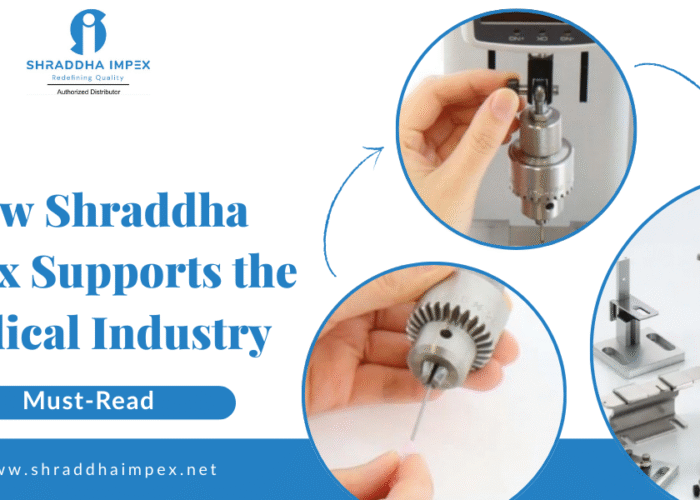Understanding how much push or pull force you apply can make a big difference in quality control, research, or production. You might wonder whether a simple handheld tester is enough or if you should invest in a setup with a test stand. In this guide, you will learn when to use a handheld force gauge and when a force gauge with a test stand is a better choice.
Whether you work in manufacturing, product development, or lab testing, choosing the right tool helps you get accurate, repeatable results. You will find clear advice on both options, along with real‑world tips.

Why Accurate Force Measurement Matters
Every measurement starts with the right instrument. Inconsistent or imprecise readings can lead to:
- Product failures in the field
- Costly recalls or rework
- Wasted time on repeated tests
- Lost confidence in your data
By matching your application to the right format—handheld or test‑stand based—you protect your products, your workflows, and your reputation.
Accurate data also boosts your team’s confidence. When you know your device is suited to the task, you focus on the test, not on second‑guessing your readings.
Understanding Handheld Force Gauges
A handheld force gauge is a compact device designed to measure tension (pull) and compression (push) forces. Key features include:
- Lightweight, portable design
- Simple push‑button operation
- Digital display for instant readings
- Battery or rechargeable power
These tools often go by names like digital force gauge, force gauge digital, or Imada push-pull gauge. Many models offer peak‑hold modes, unit conversion, and basic data output.
Handheld gauges shine when you need a quick check or field measurement. You hold the device in your hand, attach a sensor or fixture, and perform a single test.
When to Choose a Handheld Gauge
- On‑site Inspections: If you visit multiple locations or machines, you need a portable tester that you can carry.
- Quick Go/No‑Go Tests: For simple pass/fail checks, you press or pull once and read the result.
- Limited Space: In tight spots where a full stand won’t fit, a handheld unit adapts easily.
- Low‑volume Testing: If you perform only a few tests per day, the convenience outweighs the extra precision of a stand.
When your testing environment demands speed and mobility, a handheld digital force gauge from Imada or stocked by Shraddha Impex can be your best choice.
Understanding Force Gauges with Test Stands
A test stand combines a force sensor and a vertical or horizontal frame. The stand guides movement and holds the specimen or sensor in a fixed position. Typical components include:
- Rigid column or gantry
- Motorized or manual drive mechanism
- Digital force gauge or sensor mounted on a movable head
- Base plate and adjustable fixtures
Together, these parts ensure smooth, controlled motion and repeatable positioning. You might see these systems called test stands, digital test benches, or universal test machines.
When to Choose a Test Stand Setup
- High‑accuracy Requirements: The guide rail eliminates human‑induced variation for tighter tolerances.
- Repeatability & Consistency: Automated controls deliver the same speed, stroke, and force rate every time.
- Data Logging & Analysis: Many stands integrate with software for advanced reporting, graphing, and export.
- Complex Test Protocols: When you need multi‑stage loads, dwell times, or cyclic tests, the stand’s programmability shines.
A test stand paired with a digital force gauge—including models from the Imada force gauge series—turns your handheld device into a laboratory‑grade instrument.
These contrasts will guide your choice for your specific application.
Answering these questions points you toward the most efficient, cost‑effective setup.
Choosing the Right Digital Force Gauge
Whether handheld or stand‑mounted, the sensor itself matters. Look for:
- Capacity Range: Match the maximum force you expect. Gauges often range from a few newtons to several kilonewtons.
- Resolution & Accuracy: Higher resolution shows finer differences. Accuracy specs tell you how close you are to the true value.
- Data Interface: USB, RS‑232, or wireless options let you capture and analyze your results.
- Peak & Track Modes: Peak mode records the maximum force reached, while track mode follows live changes.
- Accessories & Fixtures: Choose the right grips, chucks, and adapters for your parts.
Brands like Imada are trusted worldwide for their reliable force gauges and stands. Suppliers such as Shraddha Impex stock a range of these instruments, making it easy to find the exact model you need.
Installation and Setup Tips
- Alignment is Key: On a test stand, make sure your gauge is perfectly vertical or horizontal. Even slight angles can skew results.
- Fixture Selection: Use grips designed for your material—hooks for tension tests, compression plates, or anvils for push tests.
- Zeroing and Calibration: Always zero the gauge after mounting. Schedule regular calibration to maintain trust in your readings.
- Speed Settings: If your stand is motorized, set a test speed that matches the material behavior. Too fast can cause impact errors; too slow may introduce creep.
- Environment Control: Temperature and humidity can affect sensitivity. Keep tests in a stable environment whenever possible.
Avoiding Common Pitfalls
- Overloading: Never exceed the gauge’s rated capacity. This can damage the sensor and void calibration.
- Loose Fixtures: Check that grips and connections are tight. Any play can lead to noisy data or sudden shifts.
- Ignoring Software Updates: If your digital gauge or stand uses PC software, stay current. Updates add features and fix bugs.
- Skipping Training: Even simple handheld gauges have advanced modes. A brief training session helps you leverage all features.
Maintenance and Calibration
Regular care extends the life of your equipment:
- Clean After Each Use: Wipe surfaces with a soft cloth. Avoid solvents that could damage seals.
- Inspect Cables & Connectors: Look for wear or bends that might interrupt data flow.
- Store Properly: Keep gauges in their protective cases away from extreme conditions.
- Schedule Calibration: Follow the manufacturer’s recommended intervals, typically every 6–12 months.
- Keep Records: Log calibration certificates, maintenance actions, and any repairs.
Working with a trusted partner like Shraddha Impex ensures you get expert support for both Imada handheld units and test stands.
Budget Considerations
- Handheld Gauges: Starting prices can be a few hundred dollars for basic units. Higher‑end models with data output or wider ranges cost more.
- Test Stands: Expect to invest more, several thousand dollars for a complete motorized system with software.
- Total Cost of Ownership: Factor in calibration, maintenance, and any software licenses.
If you run dozens of tests daily, the extra accuracy and efficiency of a test stand often justify its higher cost. For occasional checks, a handheld device is more economical.
Future‑Proofing Your Setup
- Modular Designs: Some stands accept different gauges, so you can upgrade sensors without replacing the frame.
- Software Compatibility: Ensure that your data tools are compatible with your lab or production systems.
- Expandability: Can you add automated grips, temperature chambers, or other accessories down the line?
Planning for future needs helps you avoid scrambling for new equipment when your testing demands grow.
Summary of Best Practices
- Define Your Requirements: Volume, precision, data needs, and budget.
- Match Form Factor to Task: Mobility vs. repeatability.
- Choose Quality Gauges: Brands like Imada offer proven reliability.
- Invest in Proper Fixtures: The right grips ensure accurate force transfer.
- Maintain and Calibrate: Protect your investment and data integrity.
By following these guidelines, you will pick the right instrument for your workflow, whether it’s a handheld digital force gauge or a full test‑stand assembly.
When you face a tension or compression test, the choice between a handheld gauge and a test stand comes down to your specific needs. If you need mobility, simplicity, and quick checks, a digital force gauge or an Imada push-pull gauge is an ideal choice. If precision, consistency, and advanced data are your priority, a test stand with a mounted sensor will serve you better.
Partnering with a reputable supplier like Shraddha Impex ensures you get genuine Imada force gauge products, expert advice, and ongoing support. Armed with this knowledge, you can confidently select the best tool, enhance the reliability of your testing, and achieve better results in your processes.


